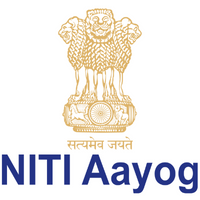The technique of protecting computers, servers, mobile devices, electronic systems, networks, and data from malicious attacks is known as Cyber Security. These cyber attacks are typically aimed at gaining access to, altering, or destroying sensitive data, extorting money from users, or disrupting normal corporate activities. Cyber Security is also known as information technology (IT) security.
Importance Of Cyber Security
In today’s connected world, everyone benefits from advanced cyber defence programs. At an individual level, a cyber security attack can result in everything from identity theft, to extortion attempts, to the loss of important data like family photos. Everyone relies on critical infrastructure like power plants, hospitals, and financial service companies. Securing these and other organisations is essential to keeping our society functioning. Cyber threat researchers, who investigate new and emerging threats and cyber attack strategies, benefit everyone. They expose new vulnerabilities, raise public awareness about the importance of cyber security, and improve open source tools. Their efforts help to make the Internet a safer place for everyone.
Types Of Cyber Threats
Some common cyber threats are mentioned below:
Malware
Malware refers to harmful software types such as worms, viruses, Trojans, and spyware that allow unauthorised access to a computer or cause damage to it. Malware attacks are becoming increasingly “fileless,” and are designed to avoid detection technologies that scan for harmful file attachments, such as antivirus software.
Phishing
When fraudsters send emails that look to be from a reputable company and ask for sensitive information, this is known as ‘Phishing’. Phishing attacks are frequently used to trick people into divulging personal information such as credit card numbers and passwords.
Ransomware
Ransomware is a type of virus that uses encryption to hold a victim’s data hostage. The vital data of a person or organisation is encrypted, making it impossible for them to access files, databases, or apps. Then a ransom is asked in order to gain access. Ransomware is frequently designed to propagate over a network and target database and file servers, paralysing a whole enterprise in the process.
Distributed Denial-Of-Service (DDoS) Attacks
Adversaries employ social engineering to deceive you into divulging crucial information. They can demand a monetary payment or get access to your personal information. To make you more inclined to click on links, download malware, or believe a malicious source, social engineering can be used with any of the risks outlined above.
Cyber Safety Tips
Following are mentioned some cyber safety tips to protect yourself against cyberattacks:
- Update your software and operating system. This ensures that you have the most up-to-date security updates.
- Use anti-virus software, which will help in detecting and eradicating threats. For the highest level of security, keep your software up to date.
- Use strong passwords. Always make sure your passwords are difficult to guess.
- Never open email attachments from unknown senders since they may contain viruses.
- Do not click on links in emails from unknown senders or strange websites: Malware is sometimes propagated by clicking on links in emails from unknown senders or unfamiliar websites.
- Don’t use public WiFi networks that aren’t secure. These networks are vulnerable to man-in-the-middle attacks.
Types Of Cyber Security
Critical Infrastructure Cyber security
The protection of systems, networks, and assets whose ongoing functioning is judged important to ensure the security of a particular nation, its economy, and the public’s health and/or safety is referred to as critical infrastructure security.
Network Security
The word “network security” refers to a wide range of technology, devices, and processes. In its most basic form, it is a set of rules and configurations that use both software and hardware tools to safeguard the integrity, secrecy, and accessibility of computer networks and data. Every company, regardless of size, sector, or infrastructure, needs network security solutions to protect itself from the ever-increasing landscape of cyber threats that exist today.
Cloud Security
Cloud security refers to the methods and technology used to protect cloud computing infrastructures from both external and internal cyberattacks. To keep data and applications in the cloud safe from current and upcoming cyber security threats, cloud security and security management best practises aimed to prevent unauthorised access are required.
Internet Of Things (IOT) Security
IoT security refers to the protection of smart devices and networks that are connected to the internet of things. Smart fire alarms, lighting, thermostats, and other appliances are examples of IoT devices that connect to the Internet without the need for human involvement.
Application Security
Application security refers to security precautions used at the application level to prevent the theft or hijacking of data or code within the app. It includes security concerns made during application development and design, as well as methods and approaches for protecting apps after they’ve been deployed.























